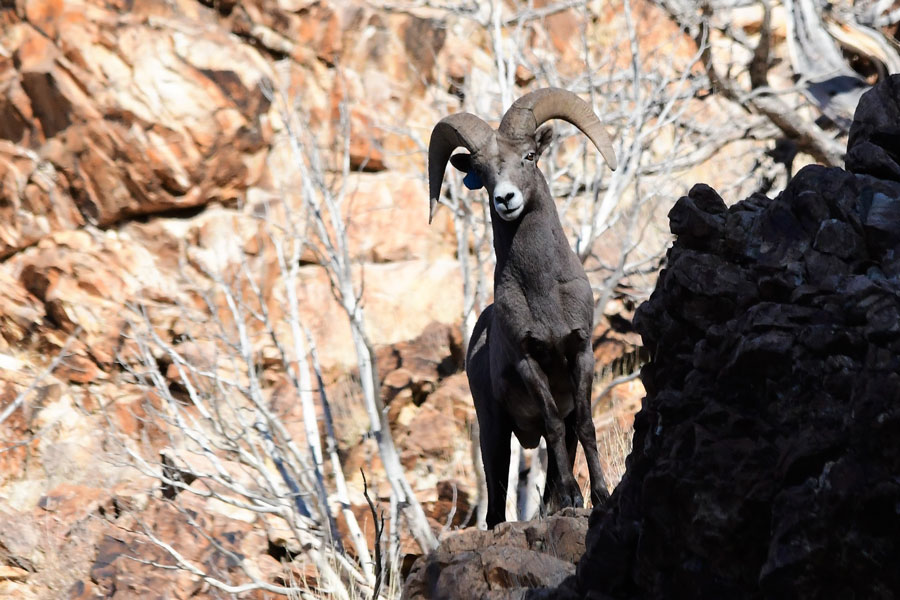Study says there are more bighorn sheep in the Tetons than initially thought
Published at
The following is a news release from the National Park Service.
JACKSON, Wyoming – Preliminary findings from an on-going DNA study suggest there may be more bighorn sheep in the Teton Range than biologists previously believed, a breath of good news as public land and wildlife managers work to conserve this small, isolated and vulnerable population.
“By analyzing the DNA in scat samples collected in the high country of the Tetons in 2020 and processing that data with statistical models, we estimate about 178 bighorn sheep lived in the range that summer,” said National Park Service wildlife biologist Carson Butler.
Biologists have closely watched the Teton bighorns for decades. They believe the herd is vulnerable because it is small, geographically isolated, and because it has lost traditional migration routes and winter ranges.
“This number is preliminary and is only a snapshot in time,” Carson said. He also emphasized he and his colleagues are halfway through a four-year study intended to answer more questions about the herd’s resiliency.
“The good news is, there are likely more bighorn sheep than we previously understood,” Butler said. “At the same time, this information should be taken in context. What really matters is the long-term trend. Conservation and stewardship efforts are needed to protect this population into the future.” Butler said the change in numbers reflects a new method of counting bighorn sheep that was implemented in 2019, not necessarily changes in the population itself.
In previous years, biologists relied primarily on counts from helicopters to track the number of bighorn sheep in the Tetons. Counts since 2020 have hovered around 100 animals, a notable increase from the preceding years’ counts which dipped below 60 animals for three consecutive years. Many factors such as weather, snow tracking conditions, and distribution of animals can greatly impact which bighorns get counted and which are missed in overflight. These types of surveys are meant to provide general population trends, measures of productivity, and sex-ratios over time and are not a census. Butler notes that while standard helicopter surveys provide much useful information, they do not provide information to estimate how many animals were missed in a survey.
Knowing these short comings of helicopter surveys, biologists invested in newer, non-invasive DNA surveys that can provide a wealth of information without ever laying hands on the animals. Butler and colleagues are part way through a four-year sampling program. In the future, Butler expects DNA data will provide a robust population estimate, a checkup of the population’s genetic status, and potentially estimates of survival and reproduction. “We only have half of our anticipated dataset in-hand right now, so these are very preliminary findings,” Butler said. “We know there’s a lot of interest in this population right now and we want to keep people up-to-speed with what we’re learning, while also not rushing to conclusions.”
The National Park Service, US Forest Service and Wyoming Game and Fish continue to agree that the Teton bighorn sheep herd is vulnerable and needs special stewardship.
“It’s amazing these sheep survive at all, given the fact those little lambs and pregnant ewes have to endure brutal blizzards at 10,000 feet with very little to eat all winter long,” said Aly Courtemanch, Wyoming Game and Fish Department wildlife biologist. “Our goal is to continue to build resilience in the herd over the long term.”
“In the long term, good stewardship and continued monitoring is key to sharing the Tetons with these magnificent animals,” said Steve Kilpatrick, former director of the Wyoming Wild Sheep Foundation. “At the same time, we can all appreciate a little cause for optimism.”
The DNA research is a collaboration that includes staff from the National Park Service, Oregon State University, Utah State University, and the Wyoming Game and Fish Department. Other funders include: the Grand Teton National Park Foundation; Wyoming Wild Sheep Foundation; Teton Conservation District; Meg and Bert Raynes Wildlife Fund; Greater Yellowstone Coordinating Committee; Iowa Chapter of the Foundation for North American Wild Sheep; and the Wild Sheep Foundation.


